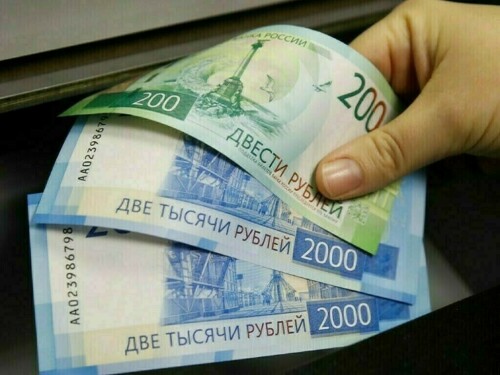Russian Rouble Gains Ground Against Dollar and Yuan
MOSCOW: The Russian rouble experienced an increase in value against both the US dollar and the Chinese yuan on Thursday. This surge was fueled by higher oil prices and the European Union’s decision to remove proposed sanctions on Russian liquefied natural gas imports.
As of 0825 GMT, the rouble had risen by approximately 1% to stand at 82.20 against the dollar.
The rouble, bolstered by growing optimism regarding potential de-escalation between Russia and the United States, has appreciated by 37% against the dollar since the beginning of the year. Conversely, the dollar has declined by 27% against the rouble during the corresponding period.
Analysts have pointed out uncertainty surrounding the mandatory forex sales regulation, which is set to expire on April 30. The finance ministry is advocating for an extension of the requirement, urging exporters to sell 40% of their foreign exchange revenue for another year.
The central bank has stated that it sees no justification for prolonging the measure, citing a stable supply of foreign currency. It also noted that foreign currency revenues for exporting companies might soon decrease due to global economic instability caused by US trade tariffs.
“If the decree on mandatory forex sales is not renewed, our assessment suggests that the rouble’s exchange rate will reach 100 in the latter half of 2025,” analysts at Sinara bank commented.
Goldman Sachs indicated earlier this week that they anticipate the rouble will weaken to 100 against the dollar by mid-summer, with a further decline to 107 to the dollar by year-end. This projection aligns with an expected oil price of $62 per barrel.
Oil prices saw an increase to $66.20 per barrel on Thursday, driven by expectations of tighter supply following the United States’ imposition of additional sanctions aimed at curbing Iranian oil trade.
Analysts at Expert RA rating agency stated, “The rouble is expected to exhibit significant volatility due to potential external shocks, and the easing of sanctions could have a detrimental effect on the currency.”
Against the Chinese yuan, which the Russian central bank uses for its foreign exchange interventions and which is currently the most actively traded foreign currency in Russia, the rouble gained 0.7%, reaching 11.30 on the Moscow Stock Exchange.



Comments (0)
No comments yet. Be the first to comment!
Leave a Comment